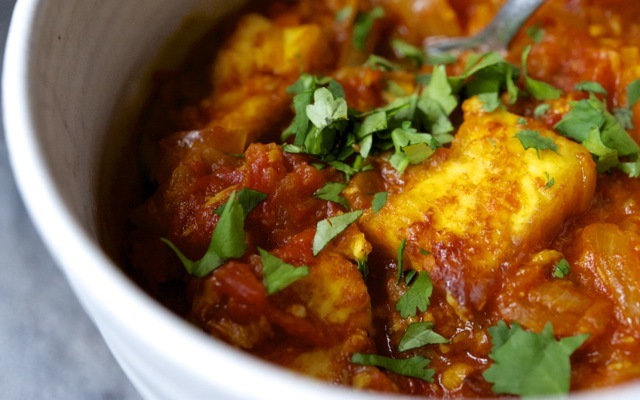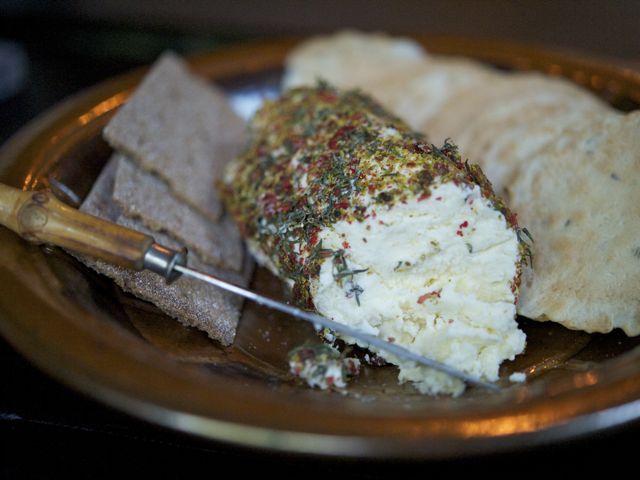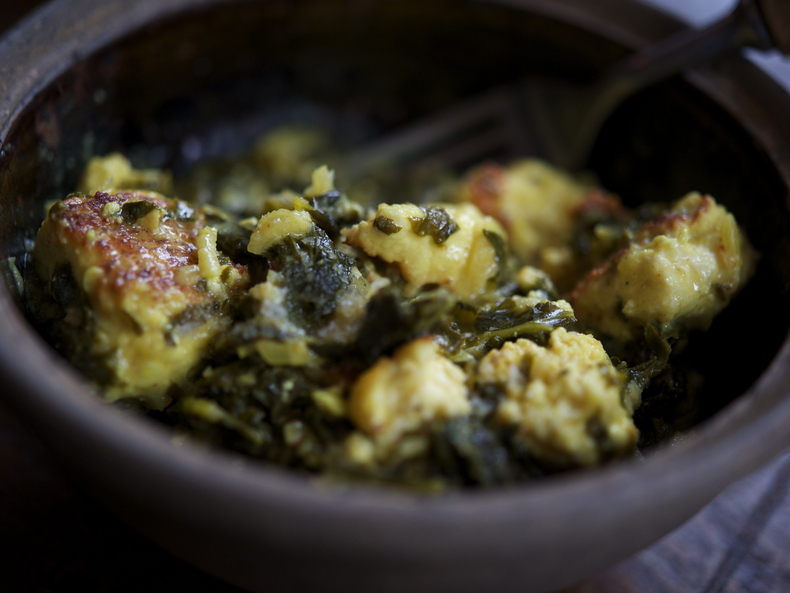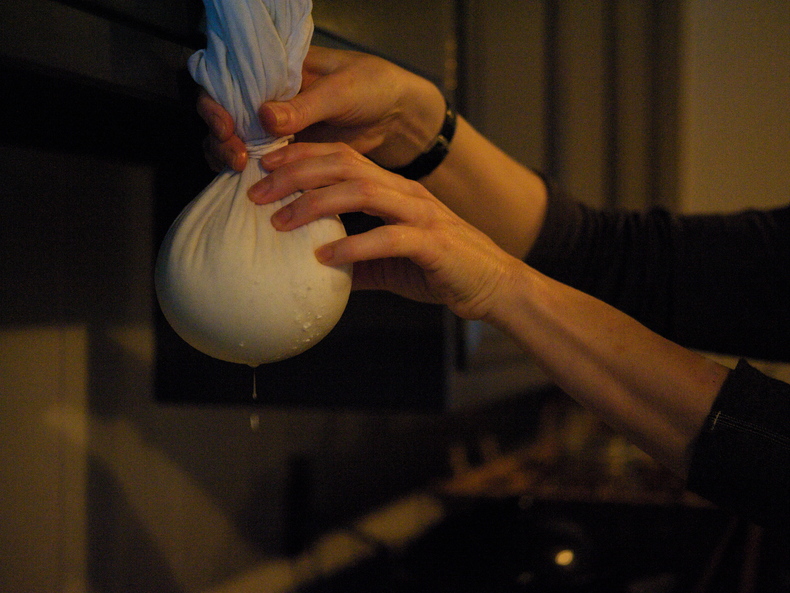If you've come across fresh paneer at the market, or been bold and tried
making your own, a dish of
saag is a wonderful way to use those pillowy cubes of creamy cheese. Although we frequently see it made with spinach, s
aag is actually any dish of spiced, stewed greens with a bit of yoghurt and cream or buttermilk stirred in. As in India, you can use any combination of greens you want, including mustard greens, chard, kale and collards. I like to leave the greens on the toothier side, so the dish is a bit less like baby food, but make it however you like. You can enrich it with cream, although I like the tangy taste you get from buttermilk and yoghurt (and they have fewer calories). I imagine you could play around with soy or hemp milk. This recipe calls for garam masala, which is a classic blend of ground spices. Almost all Indian cooks have their own version, and it can vary greatly from one region to another. True to the spirit of any curry, you can tweak the ingredients and proportions to suit yourself. If you don't have paneer, you can try using cubes of firm tofu, chunks of fried potato, or even cooked chickpeas for this dish. It won't be the same, but it will get you in the ballpark.
Read More...











